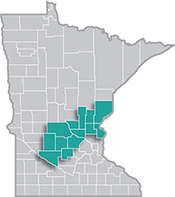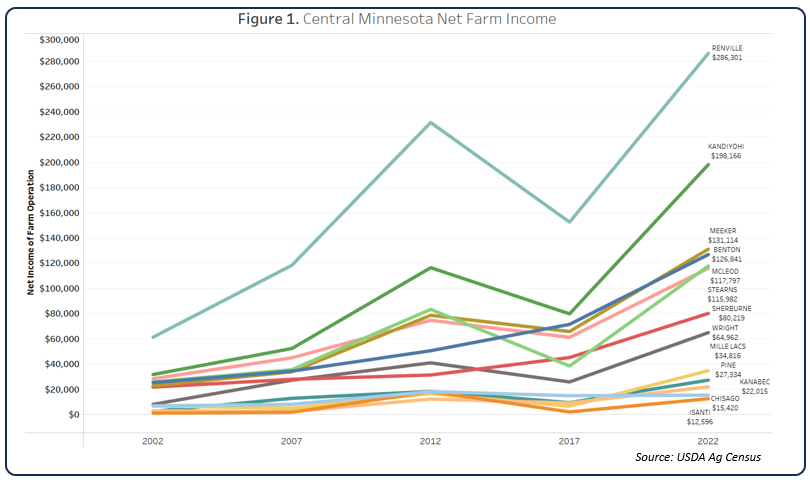 Central Minnesota is a manufacturing stronghold, with several global manufacturing firms operating there.
Central Minnesota is a manufacturing stronghold, with several global manufacturing firms operating there.
The region is especially well known for its expertise in food processing, printing, furniture manufacturing, appliances, machinery and heavy equipment manufacturing.
View our latest blogs on CareerForce. Want the freshest data delivered by email? Subscribe to our regional newsletters.
3/26/2024 9:00:00 AM
Luke Greiner
In the realm of agricultural economics, the dynamics of farm incomes serve as a barometer for the health of Central Minnesota's rural economy. From the fluctuations in crop prices to shifts in government policies, numerous factors influence the financial well-being of farmers.
In Central Minnesota, farm incomes have a large degree of variability, both over time and across the different counties due to differences in soil type, land productivity and farm size. This is highlighted at the extremes where according to the newly released 2022 Census of Agriculture, the average net farm income in Isanti County was $12,596 compared to $286,301 in Renville County.
With heavy fertile soil, Renville and Kandiyohi counties boast the largest average farm operations, averaging 677 acres and 398 acres, respectively. Counties bordering the Twin Cities feature the smallest average farm sizes, with Chisago at 92 acres and Isanti at 103 acres. However, smaller farms are also typical in the northern extent of Central Minnesota, where bogs, forests, and surface water are more prevalent, with Mille Lacs at 118 acres, Kanabec at 126 acres, and Pine at 132 acres.
The squeeze of agricultural economics is illustrated in Figure 1, where incomes have fluctuated over time, closely reflecting commodity prices for the most popular crops raised in each county. In 2017, net farm incomes declined for every county except Sherburne and Benton. Then through 2022, farm incomes jumped across the region, with huge increases for farming communities.

The size of farm operations obviously plays a major role in the net income operators are able to realize, but so does the type of crops raised and environmental factors such as soil type and terrain. For the most rural communities in the region, farm operations support a diverse and thriving agriculture industry, providing associated benefits to other aspects of the economy. With spring weather just around the corner, planting season will be here soon, and once again, Central Minnesota crop farmers are gearing up to sow the seeds of another growing season.
Contact Luke Greiner, Labor Market Analyst, at luke.greiner@state.mn.us